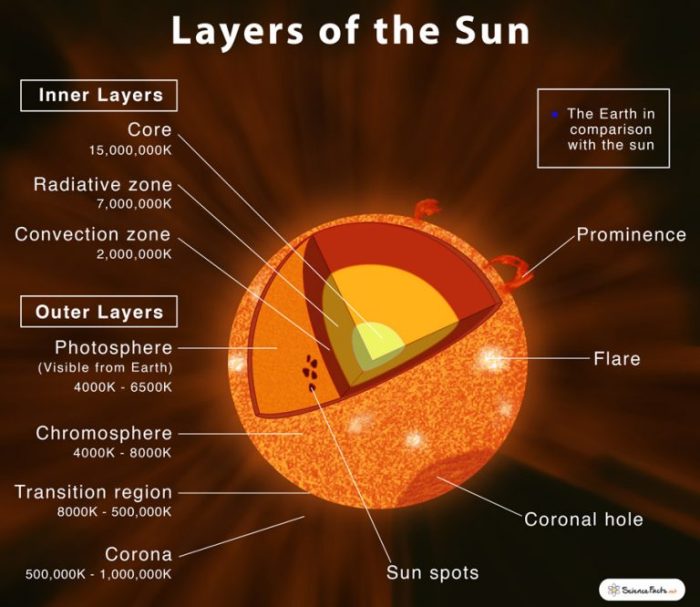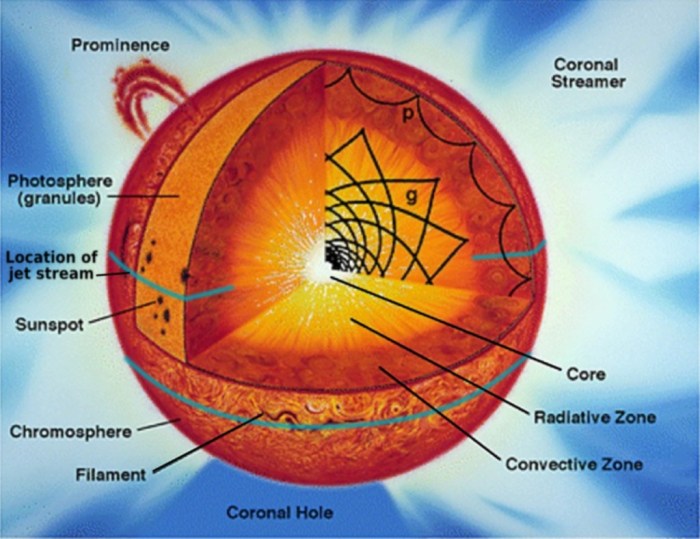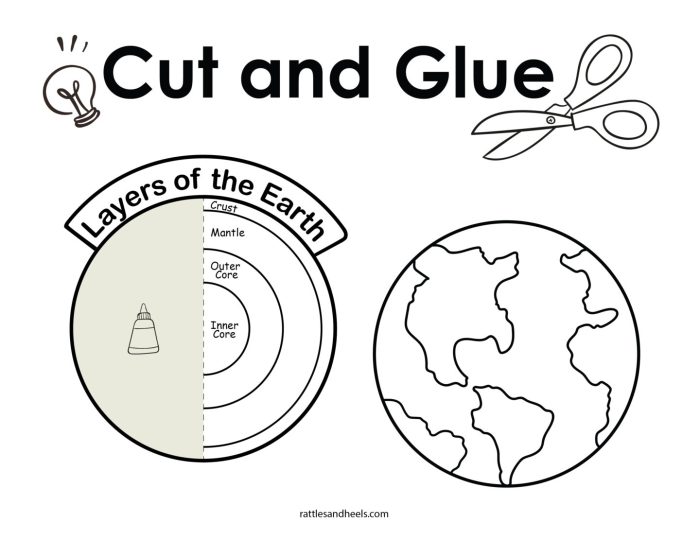Embark on a captivating journey with our layers of the sun worksheet, a comprehensive guide that unveils the intricate structure of our celestial companion. Dive into the heart of the sun, unraveling its mysteries and gaining a profound understanding of its colossal power.
From the enigmatic core to the shimmering corona, this worksheet illuminates each layer, revealing the remarkable processes that shape our star and sustain life on Earth.
Introduction

Understanding the layers of the sun is crucial because it provides insights into the sun’s behavior, its impact on Earth, and its role in the solar system. The sun, a star, consists of multiple layers, each with unique characteristics and functions.
Exploring these layers deepens our knowledge of the sun’s internal structure and its interactions with its surroundings.
Sun’s Structure
The sun’s structure comprises several layers, including the core, radiative zone, convective zone, photosphere, chromosphere, and corona. The core, located at the sun’s center, is where nuclear fusion reactions occur, generating the sun’s energy. Surrounding the core is the radiative zone, where energy is transferred outward through radiation.
The convective zone, positioned above the radiative zone, is characterized by convective currents that transport heat toward the sun’s surface.
Core

The core of the sun is its innermost region, where the temperature and pressure are so high that nuclear fusion reactions occur. It is about 25% of the sun’s radius and contains about half of its mass.
The core is the hottest part of the sun, with temperatures reaching about 27 million degrees Fahrenheit (15 million degrees Celsius). The pressure in the core is also extremely high, about 250 billion times the pressure at sea level on Earth.
Nuclear Fusion Reactions
Nuclear fusion is the process by which two atomic nuclei combine to form a single, heavier nucleus. This process releases a great amount of energy, which is what powers the sun.
In the core of the sun, hydrogen nuclei (protons) fuse to form helium nuclei (alpha particles). This reaction releases gamma rays, which are then absorbed by the surrounding gas and converted into heat.
Role in Generating the Sun’s Energy
The nuclear fusion reactions that occur in the core of the sun are responsible for generating the sun’s energy. This energy is then radiated outward through the sun’s atmosphere and into space.
The sun’s energy is essential for life on Earth. It provides the heat and light that plants need to grow, and it drives the weather patterns that distribute water and nutrients around the globe.
Radiative Zone: Layers Of The Sun Worksheet
The radiative zone is the second layer of the Sun, extending from the core to approximately 0.7 solar radii. It is characterized by its high density and temperature, ranging from 2 million to 20 million degrees Celsius. The radiative zone lacks convective currents, unlike the outer convective zone.
Instead, energy is transferred through the radiative zone via electromagnetic radiation, primarily in the form of photons.
Energy Transfer
Within the radiative zone, photons are constantly emitted and absorbed by the surrounding plasma. As photons travel through the dense plasma, they undergo numerous scattering events, changing their direction and wavelength. This process, known as radiative diffusion, results in the gradual transfer of energy from the hotter core to the cooler outer layers.
Role in Energy Transport
The radiative zone plays a crucial role in transporting energy from the core to the surface of the Sun. The high density of the plasma ensures that photons have a short mean free path, meaning they travel only a short distance before being absorbed or scattered.
This results in a slow but steady transfer of energy outward, maintaining the Sun’s equilibrium and preventing it from collapsing under its own gravity.
Convective Zone

The convective zone is the outermost layer of the Sun’s interior, located above the radiative zone. It extends from approximately 200,000 kilometers below the surface to the visible surface. The convective zone is characterized by turbulent convection, where hot plasma rises from the radiative zone and cools as it approaches the surface.
This plasma then sinks back down, carrying energy with it.The convective zone plays a crucial role in transporting energy from the Sun’s core to its surface. The rising and sinking plasma creates convection currents that efficiently transfer heat outwards. This energy is ultimately released as sunlight and other forms of radiation from the Sun’s surface.
Granulation
One of the most visible features of the convective zone is granulation. Granulation refers to the small, bright, and dark patches that can be observed on the Sun’s surface through telescopes. These patches are caused by the rising and sinking plasma in the convective zone.
Bright granules represent areas where hot plasma is rising, while dark intergranular lanes indicate regions where plasma is sinking.
Photosphere
The photosphere is the outermost layer of the sun that emits light and is visible to the naked eye. It is approximately 400 kilometers thick and has a temperature of about 5,778 Kelvin (5,505 degrees Celsius or 9,941 degrees Fahrenheit).
Light is emitted from the photosphere as a result of nuclear fusion reactions that occur in the core of the sun. These reactions release energy in the form of photons, which travel outward through the sun’s interior until they reach the photosphere.
For a deeper understanding of the sun’s layers, consider checking out the math models unit 7 quiz 1 . This quiz provides interactive questions that complement the concepts explored in the layers of the sun worksheet, offering a comprehensive learning experience.
The photons then interact with atoms and molecules in the photosphere, causing them to emit light.
Appearance of the Sun
The photosphere is responsible for the sun’s appearance. The bright, yellow-white light that we see from the sun is emitted by the photosphere. The photosphere also has a mottled appearance, which is caused by the presence of granules. Granules are small, bright regions that are about the size of Earth.
They are caused by the convection of hot gas from the interior of the sun to the surface.
Chromosphere

The chromosphere is a thin layer of the Sun’s atmosphere that lies above the photosphere. It is characterized by its reddish-orange color and is visible during solar eclipses as a thin, glowing ring around the Sun.
The chromosphere plays a crucial role in solar activity. It is the site of solar flares and prominences, which are eruptions of plasma that can extend millions of kilometers into space. The chromosphere also contains the spicules, which are thin, jet-like structures that constantly erupt from the Sun’s surface.
Importance in Studying the Sun’s Atmosphere
The chromosphere is an important region for studying the Sun’s atmosphere because it provides a window into the physical processes that occur in the outer layers of the Sun. By observing the chromosphere, scientists can learn about the Sun’s magnetic field, the formation of solar flares and prominences, and the dynamics of the solar atmosphere.
7. Corona
The corona is the outermost layer of the sun’s atmosphere, extending millions of kilometers into space. It is composed of extremely hot, ionized gas known as plasma, with temperatures reaching millions of degrees Celsius.
The corona is responsible for many of the sun’s most spectacular phenomena, including solar flares and coronal mass ejections (CMEs). These events can disrupt Earth’s magnetic field, causing auroras and power outages.
Role in Solar Activity
The corona plays a crucial role in the sun’s activity cycle. During periods of high solar activity, the corona is more active, with more frequent solar flares and CMEs. This activity is driven by the sun’s magnetic field, which is generated by the movement of plasma within the corona.
Importance for Earth, Layers of the sun worksheet
Understanding the corona is essential for predicting and mitigating the effects of solar activity on Earth. Solar flares and CMEs can disrupt satellites, communication systems, and power grids. By studying the corona, scientists can better forecast these events and take steps to protect critical infrastructure.
User Queries
What is the core of the sun like?
The core is the sun’s innermost region, characterized by extreme temperatures and pressure. It is here that nuclear fusion reactions generate the energy that powers the sun.
How does energy travel through the radiative zone?
In the radiative zone, energy is transferred primarily through the emission and absorption of photons, a process known as radiative diffusion.
What role does the convective zone play in the sun’s energy transport?
The convective zone is responsible for transporting energy from the radiative zone to the surface through the movement of hot plasma.